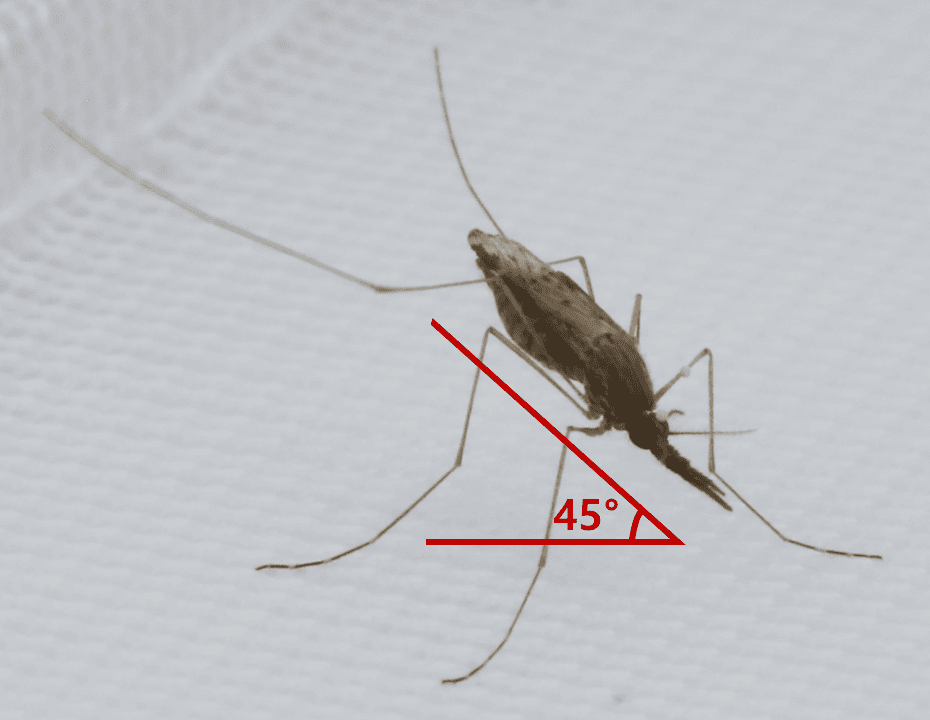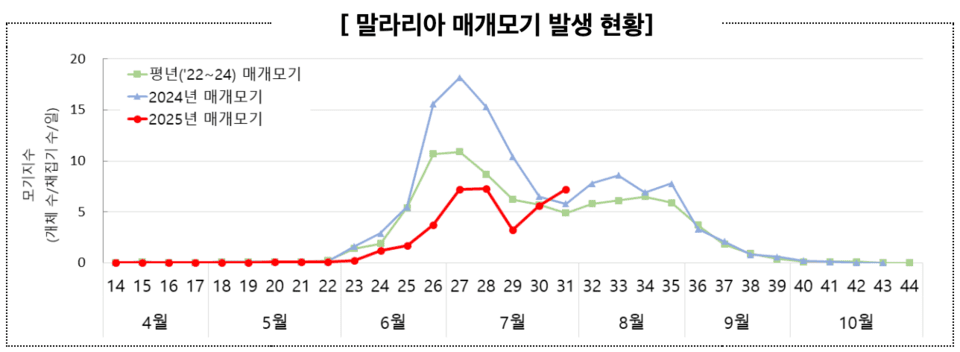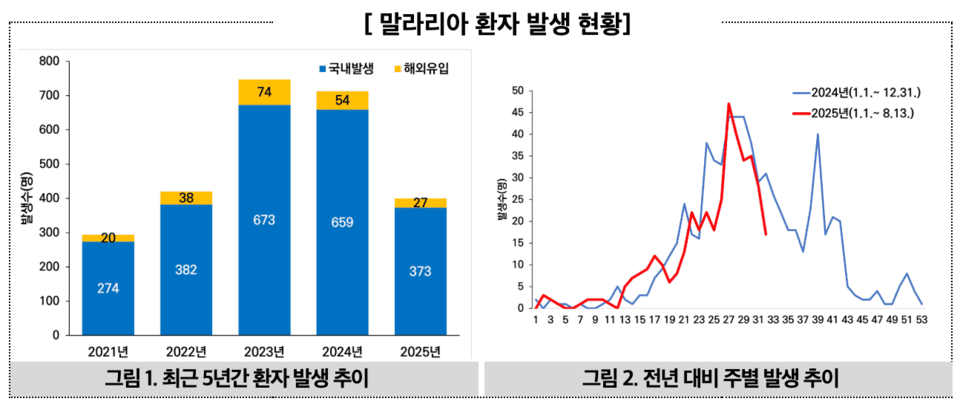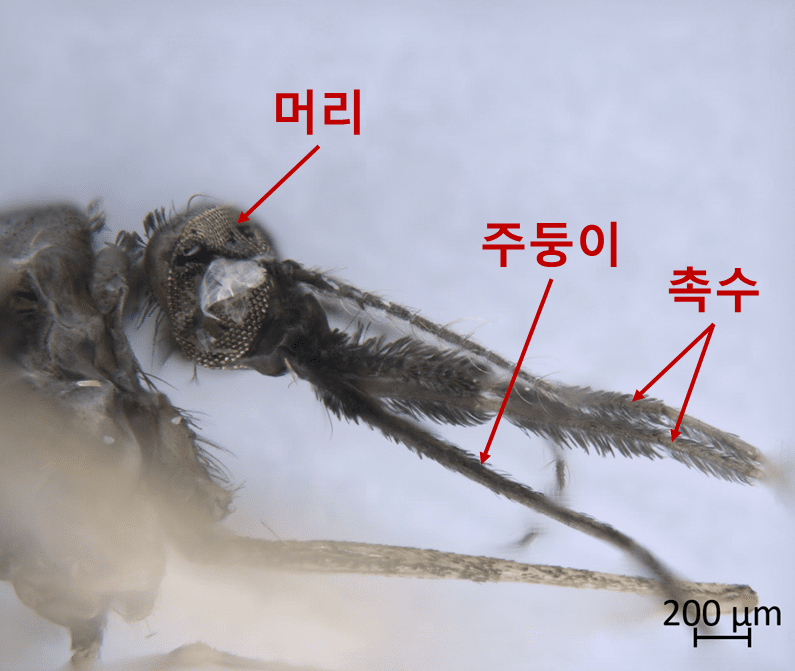The Korea Disease Control and Prevention Agency (CDC), led by Director Lim Seung-kwan, announced a nationwide malaria alert on August 19 after confirming the infection of Anopheles mosquitoes, the malaria vector, collected during the 31st week (July 27–August 2) in malaria risk areas. The alert indicates an increased chance of infection if bitten by mosquitoes.

The timing of the first parasite infection confirmation within malaria vector mosquitoes has varied annually. Recently confirmed periods over the past five years were in Paju City, 2021 (August 2–8, 31st week); Cheorwon County, 2022 (September 5–11, 36th week); Paju City, 2023 (July 10–16, 28th week); Paju City again in 2024 (July 30–31, 31st week); and in Yanggu County, 2025 (July 28–August 3, 31st week).
The CDC is collaborating with the Ministry of National Defense and local governments to conduct annual vector mosquito monitoring surveys from April to October in malaria risk areas. This project, carried out at 87 locations, aims to assess mosquito population density and parasite infection rates.
Although the cumulative average daily count of vector mosquitoes this year decreased by 54.4% compared to last year, a heavy rainfall during the 29th week increased densities, showing a rise of 46.9% over the average and 24.1% over the previous year during the 31st week.

On June 20, the CDC issued an advisory due to the increase in vector mosquitoes. By August 13, a warning was issued for eight areas—Ganghwa County, Incheon; Paju City, Yeoncheon County, and Goyang City, Gyeonggi; Yangju City and Gimpo City, Gyeonggi; and Yanggu County and Hwacheon County, Gangwon—following cluster cases and rising mosquito numbers. The advisory was later elevated to a nationwide alert following the confirmation of infected mosquitoes. To date, 373 malaria cases have been reported this year (January 1–August 13), marking an 18.8% decline from 443 cases during the same period last year.

A malaria cluster case implies two or more occurrences within 1 km and within 14 days of symptom onset among patients in risk areas. As of August 13 this year, 16 clusters were reported—six fewer than the 22 reported during the same period last year—with two in Ganghwa County, seven in Paju City, two in Goyang City’s Ilsandong District, and one each in Ilsanseo District, Deogyang District, Gimpo City, Yangju City, and Yeoncheon County.
The primary modes of infection include sweating and resting outdoors during mosquito-active evening hours, living near lake parks and puddles, or being bitten while strolling in such areas.

CDC Director Lim Seung-kwan stated that with the detection of infected mosquitoes and the increase in vector mosquito numbers, the infection risk has heightened. He urged local governments in risk areas to enhance mosquito control measures, and residents and visitors should strictly follow preventive measures such as avoiding nighttime activities, wearing long sleeves, using repellents, and utilizing mosquito nets while sleeping. He also stressed the importance of visiting health centers or medical facilities promptly for testing if experiencing fever and chills.
Malaria Prevention Guidelines:
◈ In Korea, avoid outdoor activities from dusk until dawn during mosquito-active months (April to October).
◈ When going out at night, wear light-colored long sleeves and pants, apply mosquito repellent away from the face to avoid bites, and practice personal preventive measures.
◈ To prevent mosquitoes from entering indoor spaces, maintain screens and use mosquito nets, and apply indoor insecticides appropriately.
◈ Residents or travelers in malaria risk areas should seek medical attention promptly if symptoms such as chills, high fever, and periodic sweating occur every 48 hours, along with headaches, vomiting, and diarrhea, especially after military service or travel.